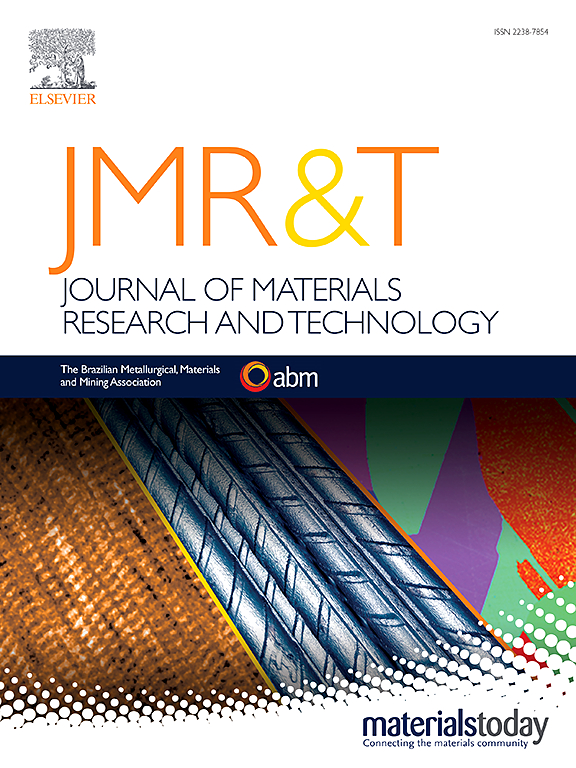Modification of inclusion in high-strength steel treated with rare earth
IF 6.2
2区 材料科学
Q1 MATERIALS SCIENCE, MULTIDISCIPLINARY
Journal of Materials Research and Technology-Jmr&t
Pub Date : 2025-03-08
DOI:10.1016/j.jmrt.2025.03.071
引用次数: 0
Abstract
This study focuses on the key issue of brittle inclusions leading to the failure of high-strength steel and investigates the modification of inclusions in steel using rare earth elements. By combining experimental characterization, thermodynamic calculations, and first-principles calculations, the evolution of inclusions in high-strength steel before and after La–Ce rare earth modification is revealed from both macroscopic and microscopic perspectives. The physical properties of different types of inclusions and their impact on steel performance are also examined. The results show that, in the absence of La–Ce, the main inclusions in the steel are large-sized MnS, Ca–Al(-Mg)-O, MnS, and their composite inclusions. After the addition of La–Ce, the original inclusions transform into smaller-sized, nearly spherical or ellipsoidal RE-O-S and RE-O-S + CaS inclusions. The evolution sequence of inclusions in Ce-treated high-strength steel is as follows: Slag phase- > Slag phase + CeAlO3+CaO- > Slag phase + CeAlO3+CaO + Ce2O3- > CeAlO3+CaO + Ce2O3- > CeAlO3+CaO + Ce2O3+CaS- > Ce2O3+CaS- > Ce2O3+CaS- > Ce2O3+CaS + Ce2O2S. Compared to the Fe matrix, the elastic modulus (B), shear modulus (G), Young's modulus (E), and hardness (Hv) of Al2O3, LaAlO3, and CeAlO3 differ significantly, while the corresponding values of CaAl2O4, Ca3Al2O6, and Ca12Al14O33 are all lower than those of the Fe matrix and exhibit brittle characteristics. In contrast, Ce2O2S and La2O2S show small differences in elastic modulus, and hardness compared to the Fe matrix, which improves the consistency of plastic deformation in the steel matrix, delays the initiation of microvoids and microcracks, and enhances the mechanical properties of the steel. This study provides a theoretical basis for understanding the mechanism of rare earth elements in steel and optimizing the performance of steel.
求助全文
约1分钟内获得全文
求助全文
来源期刊

Journal of Materials Research and Technology-Jmr&t
Materials Science-Metals and Alloys
CiteScore
8.80
自引率
9.40%
发文量
1877
审稿时长
35 days
期刊介绍:
The Journal of Materials Research and Technology is a publication of ABM - Brazilian Metallurgical, Materials and Mining Association - and publishes four issues per year also with a free version online (www.jmrt.com.br). The journal provides an international medium for the publication of theoretical and experimental studies related to Metallurgy, Materials and Minerals research and technology. Appropriate submissions to the Journal of Materials Research and Technology should include scientific and/or engineering factors which affect processes and products in the Metallurgy, Materials and Mining areas.
 求助内容:
求助内容: 应助结果提醒方式:
应助结果提醒方式:


